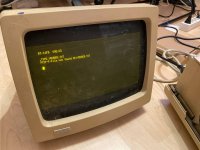@stanp We don't need to use VRAM for an advantage picture viewer. We just need to load as much images as possible into CPU RAM. Several video pages are good for creation of video effects like animation.
This means that there is not enough memory on your system. Just make value MEMSZ less, for instance make MEMSZ=20000.I compiled with no errors, but when I link I get two of this error:
PAB -- #DIAG*-Segment PI has address overflow: allocation deleted

